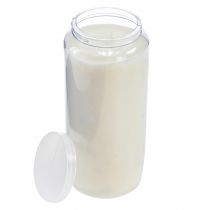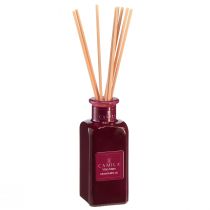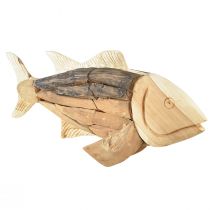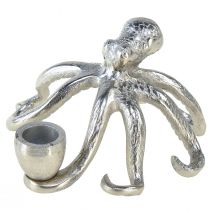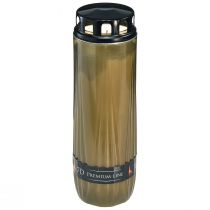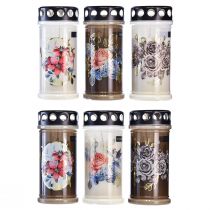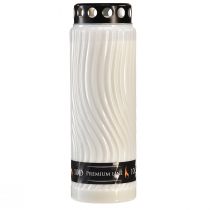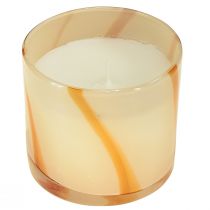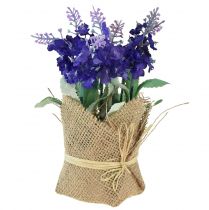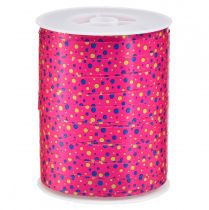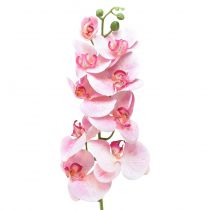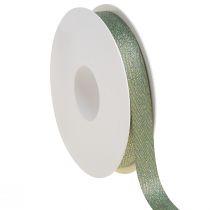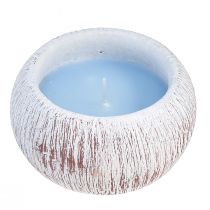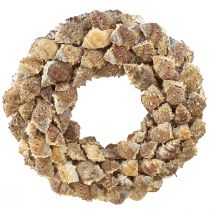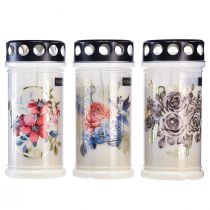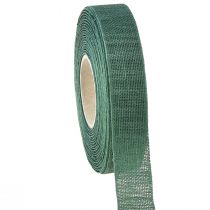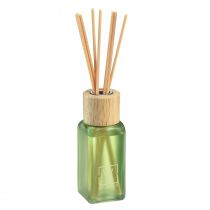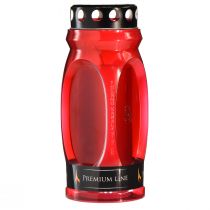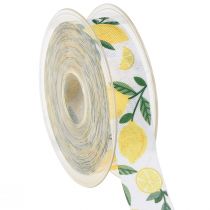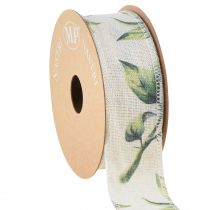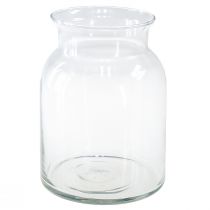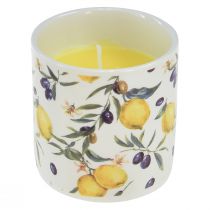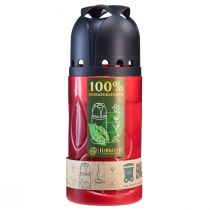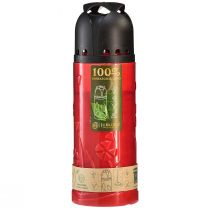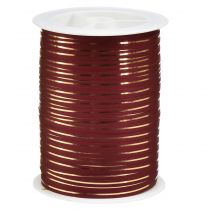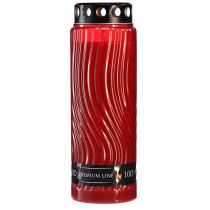Category: R like ranunculus
Keywords: Rattan to ranunculus
 Raffia is a special raffia variant, which is mainly used in the decorative area in this country. Raffia is obtained from the palm tree of the same name, often written as Raphia. The palm variety is native to Madagascar and today thrives in many countries of the African continent, where harvesting and processing of raffia represent a not inconsiderable economic factor. The fibrous base material for raffia is obtained from the leaflets of the palm, the resulting raffia convinces practically by its great stability and immensely good elasticity. In Africa itself, a processing of raffia to baskets and rope goods takes place, which can be purchased here in the specialized trade. In the decoration area, raffia is used in numerous basic forms and helps, for example, to decorate arrangements. Wickerwork from Raffia can thus be used in gardens and terraces in this country and provide a natural basic container. Further applications of raffia are in the design of furniture, here is the material with bamboo or rattan to compare. Rattanbast, as a basic and insulating material, is thus increasingly fulfilling its function as an ecological building material in this country.
Raffia is a special raffia variant, which is mainly used in the decorative area in this country. Raffia is obtained from the palm tree of the same name, often written as Raphia. The palm variety is native to Madagascar and today thrives in many countries of the African continent, where harvesting and processing of raffia represent a not inconsiderable economic factor. The fibrous base material for raffia is obtained from the leaflets of the palm, the resulting raffia convinces practically by its great stability and immensely good elasticity. In Africa itself, a processing of raffia to baskets and rope goods takes place, which can be purchased here in the specialized trade. In the decoration area, raffia is used in numerous basic forms and helps, for example, to decorate arrangements. Wickerwork from Raffia can thus be used in gardens and terraces in this country and provide a natural basic container. Further applications of raffia are in the design of furniture, here is the material with bamboo or rattan to compare. Rattanbast, as a basic and insulating material, is thus increasingly fulfilling its function as an ecological building material in this country.
 Ranunculus, in common usage, is a variety of hawthorn plants, which are among the world's most widely used flowering plants, with thousands of species. Numerous flowers, which are known in Germany under other names, belong to the main genus of Ranunculus and thus visually prove the biodiversity of this plant genus. Among the best known representatives of the Ranunculus include the anemone, the hellebore, the columbine and the yolk flowers. Ranunculus. The Common Ranunculus. The Common Ranunculus. As many species are also native to Central Europe and can thus be found on green areas without much cultivation, so have also played an important role in floristics and are found in bouquets or flower arrangements in particularly attractive forms. Nursing is rather easy in most species, and many species are ideal for outdoor use in the garden or on the terrace, as they can optimally with the temperate, European climate. Standard potting soil is just as suitable for cultivation and care as untreated irrigation water without the use of special fertilizers.
Ranunculus, in common usage, is a variety of hawthorn plants, which are among the world's most widely used flowering plants, with thousands of species. Numerous flowers, which are known in Germany under other names, belong to the main genus of Ranunculus and thus visually prove the biodiversity of this plant genus. Among the best known representatives of the Ranunculus include the anemone, the hellebore, the columbine and the yolk flowers. Ranunculus. The Common Ranunculus. The Common Ranunculus. As many species are also native to Central Europe and can thus be found on green areas without much cultivation, so have also played an important role in floristics and are found in bouquets or flower arrangements in particularly attractive forms. Nursing is rather easy in most species, and many species are ideal for outdoor use in the garden or on the terrace, as they can optimally with the temperate, European climate. Standard potting soil is just as suitable for cultivation and care as untreated irrigation water without the use of special fertilizers.
 Ranunculus, in common usage, is a variety of hawthorn plants, which are among the world's most widely used flowering plants, with thousands of species. Numerous flowers, which are known in Germany under other names, belong to the main genus of Ranunculus and thus visually prove the biodiversity of this plant genus. Among the best known representatives of the Ranunculus include the anemone, the hellebore, the columbine and the yolk flowers. Ranunculus. The Common Ranunculus. The Common Ranunculus. As many species are also native to Central Europe and can thus be found on green areas without much cultivation, so have also played an important role in floristics and are found in bouquets or flower arrangements in particularly attractive forms. Nursing is rather easy in most species, and many species are ideal for outdoor use in the garden or on the terrace, as they can optimally with the temperate, European climate. Standard potting soil is just as suitable for cultivation and care as untreated irrigation water without the use of special fertilizers.
Ranunculus, in common usage, is a variety of hawthorn plants, which are among the world's most widely used flowering plants, with thousands of species. Numerous flowers, which are known in Germany under other names, belong to the main genus of Ranunculus and thus visually prove the biodiversity of this plant genus. Among the best known representatives of the Ranunculus include the anemone, the hellebore, the columbine and the yolk flowers. Ranunculus. The Common Ranunculus. The Common Ranunculus. As many species are also native to Central Europe and can thus be found on green areas without much cultivation, so have also played an important role in floristics and are found in bouquets or flower arrangements in particularly attractive forms. Nursing is rather easy in most species, and many species are ideal for outdoor use in the garden or on the terrace, as they can optimally with the temperate, European climate. Standard potting soil is just as suitable for cultivation and care as untreated irrigation water without the use of special fertilizers.
 The term rattan has also been used for woody plants of the rattan palms, but in common parlance. In Germany, the name Peddingrohr is also common, which derives from the Low German term for Pflanzenmark. It is derived from the original design of a machine for a manual or industrial process. Rattan is used in the weaving of baskets, chairs and other furniture. Rattan is valued not only for its ease of use and its flexible character, but the natural material is also very environmentally friendly and stable in many weather conditions. Many products that are now offered in the typical rattan look, but no longer made of real rattan, but use the artificially produced poly rattan. This has an even greater stability and, despite its synthetic character, is 100% biodegradable, so it can be environmentally friendly. Real rattan is still found in the modern living environment and is used in addition to horticulture as a material for percussion instruments.
The term rattan has also been used for woody plants of the rattan palms, but in common parlance. In Germany, the name Peddingrohr is also common, which derives from the Low German term for Pflanzenmark. It is derived from the original design of a machine for a manual or industrial process. Rattan is used in the weaving of baskets, chairs and other furniture. Rattan is valued not only for its ease of use and its flexible character, but the natural material is also very environmentally friendly and stable in many weather conditions. Many products that are now offered in the typical rattan look, but no longer made of real rattan, but use the artificially produced poly rattan. This has an even greater stability and, despite its synthetic character, is 100% biodegradable, so it can be environmentally friendly. Real rattan is still found in the modern living environment and is used in addition to horticulture as a material for percussion instruments.
 Peddigrohr is a well-known name in Germany for the material rattan, which is suitable for the production of baskets, furniture and other objects. Rattan is obtained from the same name, which is native to Southeast Asia and still represents a significant economic factor here today. German term "paddik" ago, which means both as pith or pulp of a plant. Exactly this is taken from a rattan palm and then processed manually or industrially to fine threads or tubes. The latter are used, for example, in the construction of sturdy and natural furniture, while finer rattan threads are more suitable for fine wickerwork. The use of untreated, more stable Pedigree pipes is established in this country, for example in the production of sticks or hand sweepers. Rattan cane is valued as a material primarily because of its natural character and its striking appearance, with the help of which terraces, balconies and gardens can be stylishly and close to nature. Since the material should be occasionally used to maintain its quality, it may or may not be in the wild for most of the year.
Peddigrohr is a well-known name in Germany for the material rattan, which is suitable for the production of baskets, furniture and other objects. Rattan is obtained from the same name, which is native to Southeast Asia and still represents a significant economic factor here today. German term "paddik" ago, which means both as pith or pulp of a plant. Exactly this is taken from a rattan palm and then processed manually or industrially to fine threads or tubes. The latter are used, for example, in the construction of sturdy and natural furniture, while finer rattan threads are more suitable for fine wickerwork. The use of untreated, more stable Pedigree pipes is established in this country, for example in the production of sticks or hand sweepers. Rattan cane is valued as a material primarily because of its natural character and its striking appearance, with the help of which terraces, balconies and gardens can be stylishly and close to nature. Since the material should be occasionally used to maintain its quality, it may or may not be in the wild for most of the year.
 Under the room decoration, all objects are summarized, which can be in a closed room, a conservatory or a terrace and have a positive effect on the ambience and the overall aesthetic feeling. Flowers and other, floristic products are just as much a part of room decorations as deco elements made of stone, sand, glass and other natural materials. Depending on the individual taste, decoration figures and other design elements can therefore be incorporated into the room decoration, which may have a cultural or religious connection or reflect the hobbies and interests of the owner. For many centuries, floral room decoration has not played a major role in Germany, but has thus been integrated into domestic life in all seasons in various forms. While in the summer months the goal is to make a natural touch into one's own four walls through flowers and fruits, in the cold and barren months a positive ambience should be consciously created with a little green. It is supplemented by candles, stones, roots and similar elements of the outdoors. Creative households can be used in the extensive range of floristik21.de.
Under the room decoration, all objects are summarized, which can be in a closed room, a conservatory or a terrace and have a positive effect on the ambience and the overall aesthetic feeling. Flowers and other, floristic products are just as much a part of room decorations as deco elements made of stone, sand, glass and other natural materials. Depending on the individual taste, decoration figures and other design elements can therefore be incorporated into the room decoration, which may have a cultural or religious connection or reflect the hobbies and interests of the owner. For many centuries, floral room decoration has not played a major role in Germany, but has thus been integrated into domestic life in all seasons in various forms. While in the summer months the goal is to make a natural touch into one's own four walls through flowers and fruits, in the cold and barren months a positive ambience should be consciously created with a little green. It is supplemented by candles, stones, roots and similar elements of the outdoors. Creative households can be used in the extensive range of floristik21.de.
 Rotting is a process of the free nature in which plants, animals and humans disintegrate after their death into their natural and chemical basic substances and are thus returned to the earth again. The rotting is possible with all materials and materials that have an organic base, industrially manufactured plastic. In humans and animals, at a rate different speeds, depending on the constituents of the body, for example, skin and muscles decompose much faster than the bone mass, which can be heard from its grave decades after the death of a human. The rotting of flowers, fruits and other living things of the kingdom is privately and industrially used for the production of potting soil, here all organic waste is collected on a compost heap. In a natural and pure potting soil, which can be used for other purposes of horticulture. If an atmosphere is produced during rotting, fermentation of the organic residues takes place instead of composting – a principle that is exploited by modern and environmentally friendly biogas plants.
Rotting is a process of the free nature in which plants, animals and humans disintegrate after their death into their natural and chemical basic substances and are thus returned to the earth again. The rotting is possible with all materials and materials that have an organic base, industrially manufactured plastic. In humans and animals, at a rate different speeds, depending on the constituents of the body, for example, skin and muscles decompose much faster than the bone mass, which can be heard from its grave decades after the death of a human. The rotting of flowers, fruits and other living things of the kingdom is privately and industrially used for the production of potting soil, here all organic waste is collected on a compost heap. In a natural and pure potting soil, which can be used for other purposes of horticulture. If an atmosphere is produced during rotting, fermentation of the organic residues takes place instead of composting – a principle that is exploited by modern and environmentally friendly biogas plants.
 Rips refers to a special form of fabric named after the web principle of the same name. In binding theory, rips is one of the most important and fundamental types of fabric, which represents a variant of the classic plain weave, in which at the same time a horizontally woven fabric structure is created. Basically, ribs are understood to mean different weaving techniques, in common usage rips have been established for the warp or transverse ribs, which has an immense number of basic warp threads. Completely finished ribbed fabric has a particularly high rigidity and strength compared to many other fabrics, in addition, a professionally made rips are completely tear-resistant. These characteristics have been said to have been made in the manufacture of furniture, for example, to string chairs and other seating furniture with this fabric. The range of application is not limited to this, so the ribbed fabric can also be found in funeral floristry, where ribbons and ribbons are made of this durable material. In modern, industrial production, it is possible to interweave several colors in a targeted manner and, for example, to integrate letters and similar filigree elements into a confined space in a rip.
Rips refers to a special form of fabric named after the web principle of the same name. In binding theory, rips is one of the most important and fundamental types of fabric, which represents a variant of the classic plain weave, in which at the same time a horizontally woven fabric structure is created. Basically, ribs are understood to mean different weaving techniques, in common usage rips have been established for the warp or transverse ribs, which has an immense number of basic warp threads. Completely finished ribbed fabric has a particularly high rigidity and strength compared to many other fabrics, in addition, a professionally made rips are completely tear-resistant. These characteristics have been said to have been made in the manufacture of furniture, for example, to string chairs and other seating furniture with this fabric. The range of application is not limited to this, so the ribbed fabric can also be found in funeral floristry, where ribbons and ribbons are made of this durable material. In modern, industrial production, it is possible to interweave several colors in a targeted manner and, for example, to integrate letters and similar filigree elements into a confined space in a rip.
 A repot is being understood as being a process in horticulture in which a plant, together with its root system, is removed from its previous nutrient medium or planter and planted in another location. The repotting can have many reasons, it is particularly common in the rearing of young plants. These seeds are often reared in smaller flower pots and greenhouses to control and control the supply of water and nutrients more precisely, and as the plant grows, the small planters are no longer sufficient for the expanding root system. In this case, it is advisable in full view or in the wild. Repotting can therefore follow aesthetic criteria, for example, by putting flowering plants in different colors into beds or to ensure a colorful look. When repotting each plant, it should be noted that the root ball of the plant is completely as possible and without damage to the new planet. If it comes to damage to the roots, the new plant finds it difficult to hold in their new environment and a sufficient supply of nutrients and this in the worst case.
A repot is being understood as being a process in horticulture in which a plant, together with its root system, is removed from its previous nutrient medium or planter and planted in another location. The repotting can have many reasons, it is particularly common in the rearing of young plants. These seeds are often reared in smaller flower pots and greenhouses to control and control the supply of water and nutrients more precisely, and as the plant grows, the small planters are no longer sufficient for the expanding root system. In this case, it is advisable in full view or in the wild. Repotting can therefore follow aesthetic criteria, for example, by putting flowering plants in different colors into beds or to ensure a colorful look. When repotting each plant, it should be noted that the root ball of the plant is completely as possible and without damage to the new planet. If it comes to damage to the roots, the new plant finds it difficult to hold in their new environment and a sufficient supply of nutrients and this in the worst case.
 The term pheasant flowers sums up a large number of different genera, all of which have a striking flower shape in common. This is characterized by a flower body, in the upper part of the stamens of the plant are. If it comes to pollination by an insect, this crawls into the inside of the stamens, this crawling is similar to the penetration of an object in the human throat. Numerous species have barrier on the edge of their petals, which prevents the vermin and other, non-pollinating animals are from penetrating into the inside of the throat flower. Among the most important species of pheasant flowers that can be found in this country include the bog, the red foxglove and the brownwort. Different species of pheasant flowers are poisonous to humans like other creatures, which is why many species of pheasant flowers are not used in modern floristry. Regardless of this, we occasionally associate it with phyllanths in their private garden. Phyllanths however, the phyllanths, however, are still living in the horticulture.
The term pheasant flowers sums up a large number of different genera, all of which have a striking flower shape in common. This is characterized by a flower body, in the upper part of the stamens of the plant are. If it comes to pollination by an insect, this crawls into the inside of the stamens, this crawling is similar to the penetration of an object in the human throat. Numerous species have barrier on the edge of their petals, which prevents the vermin and other, non-pollinating animals are from penetrating into the inside of the throat flower. Among the most important species of pheasant flowers that can be found in this country include the bog, the red foxglove and the brownwort. Different species of pheasant flowers are poisonous to humans like other creatures, which is why many species of pheasant flowers are not used in modern floristry. Regardless of this, we occasionally associate it with phyllanths in their private garden. Phyllanths however, the phyllanths, however, are still living in the horticulture.
 The term rhododendron refers to a plant of more than 1000 species, which belongs to the heather family and thrives in both Europe and other continents in a wide variety of colors and shapes. Due to the geographically large differences, neither the look nor the care of rhododendrons is uniform, so that if you are interested in this. Rhododendrons, which are native to Europe, are commonly known as shrub plants, which have larger and smaller colors. Most species that thrive in Europe are green throughout the year, making them ideal as winter-proof plants for bordering gardens or landscaping. The handling of rhododendrons should be considered as toxic and toxic. Rhododendrons a see sweet nectar, which can lead to symptoms of intoxication when consumed. These animals are optimally protected from these plant species.
The term rhododendron refers to a plant of more than 1000 species, which belongs to the heather family and thrives in both Europe and other continents in a wide variety of colors and shapes. Due to the geographically large differences, neither the look nor the care of rhododendrons is uniform, so that if you are interested in this. Rhododendrons, which are native to Europe, are commonly known as shrub plants, which have larger and smaller colors. Most species that thrive in Europe are green throughout the year, making them ideal as winter-proof plants for bordering gardens or landscaping. The handling of rhododendrons should be considered as toxic and toxic. Rhododendrons a see sweet nectar, which can lead to symptoms of intoxication when consumed. These animals are optimally protected from these plant species.
 Reed rods, so called reed rods in many regions, represent industrially used reed canes, which are used in horticulture in numerous areas. In the natural form directly through the specialized trade. Since reed rods reach a height of one meter or more quickly, they are often used to separate garden areas or on property boundaries. Their natural and opaque character is appreciated, which makes it possible to abandon classical fences when erecting in large quantities. In small or abbreviated versions, reed rods are popular items in the decoration sector and are therefore used in floristry or decorative bowls around this natural element. Reeds are thus known in Japanese Ikebana, reeds and reeds are thus found on other continents and are used as a natural material for aesthetic and practical purposes. In northern Germany, reed rods are also used, for example, to cover or insulate rooftops; the natural material is robust and able to cope with all weather conditions.
Reed rods, so called reed rods in many regions, represent industrially used reed canes, which are used in horticulture in numerous areas. In the natural form directly through the specialized trade. Since reed rods reach a height of one meter or more quickly, they are often used to separate garden areas or on property boundaries. Their natural and opaque character is appreciated, which makes it possible to abandon classical fences when erecting in large quantities. In small or abbreviated versions, reed rods are popular items in the decoration sector and are therefore used in floristry or decorative bowls around this natural element. Reeds are thus known in Japanese Ikebana, reeds and reeds are thus found on other continents and are used as a natural material for aesthetic and practical purposes. In northern Germany, reed rods are also used, for example, to cover or insulate rooftops; the natural material is robust and able to cope with all weather conditions.
 The Roman wreath, often referred to in Roman circles as the Romans, is a straw of various sizes, which serves as the basis for any child of wreaths or round arrangements. On the basis of a novel wreath, Advent wreaths, harvest wreaths and other floristic elements can be created in a decorative wreath shape. The basis of every novel is dried straw, which is broken in a long shape and is held together by binding wire. As a harvest wreath is preserved, which can finally be decorated with flowers, crops and other natural elements. If wished, the wreath is used for a memorial service or as an advent wreath, the basic is wrapped in wreath ribbon, which conceals the bright appearance of the straw with a green or black tint. The surface structure of the novel wreath is now straightened, which simplifies the subsequent attachment of decorative elements. Even today, Roman wreaths are manufactured by numerous manufacturers by hand and distributed in this raw form by the specialized trade, to give florists or flower lovers in their free time the opportunity to be creative themselves. So in the online shop of floristik21.de the Roman wreath can be found in different sizes.
The Roman wreath, often referred to in Roman circles as the Romans, is a straw of various sizes, which serves as the basis for any child of wreaths or round arrangements. On the basis of a novel wreath, Advent wreaths, harvest wreaths and other floristic elements can be created in a decorative wreath shape. The basis of every novel is dried straw, which is broken in a long shape and is held together by binding wire. As a harvest wreath is preserved, which can finally be decorated with flowers, crops and other natural elements. If wished, the wreath is used for a memorial service or as an advent wreath, the basic is wrapped in wreath ribbon, which conceals the bright appearance of the straw with a green or black tint. The surface structure of the novel wreath is now straightened, which simplifies the subsequent attachment of decorative elements. Even today, Roman wreaths are manufactured by numerous manufacturers by hand and distributed in this raw form by the specialized trade, to give florists or flower lovers in their free time the opportunity to be creative themselves. So in the online shop of floristik21.de the Roman wreath can be found in different sizes.
 The term room divider refers to a movable object. It is meant to be integrated into the interior of a large room and visually makes the division of the entire room area. Room dividers are used wherever they are needed to make their living space into different areas. By plant lovers. On the one hand, every room divider of this child adds a natural touch to the room, which positively influences the overall ambience of a room. Since only larger plants such as palm trees, ornamental trees, etc. are suitable as room dividers, they also have a large number of leaves, which ensure a constant supply of fresh oxygen to the room. Ultimately, a room divider in the shape of a room is very flexible in its location and can be placed on request quickly in another area of the room. Due to the higher indoor temperatures throughout the year, palm trees, succulents and similar plants are also available as room dividers and have no possibility of cultivation in the local garden. An individual use as a room divider is to be clarified before buying in specialist shops.
The term room divider refers to a movable object. It is meant to be integrated into the interior of a large room and visually makes the division of the entire room area. Room dividers are used wherever they are needed to make their living space into different areas. By plant lovers. On the one hand, every room divider of this child adds a natural touch to the room, which positively influences the overall ambience of a room. Since only larger plants such as palm trees, ornamental trees, etc. are suitable as room dividers, they also have a large number of leaves, which ensure a constant supply of fresh oxygen to the room. Ultimately, a room divider in the shape of a room is very flexible in its location and can be placed on request quickly in another area of the room. Due to the higher indoor temperatures throughout the year, palm trees, succulents and similar plants are also available as room dividers and have no possibility of cultivation in the local garden. An individual use as a room divider is to be clarified before buying in specialist shops.
 In addition to the leaves and the shoot axis, the root is the third, essential component of every plant. The essential distinguishing feature of a root is always in the ground, while leaves, stem and flowers of the plant are always found on the earth's surface. A root not only provides each plant with sufficient support for safe and healthy growth, it also provides a substantial portion of nutrient uptake via the root system. Many green plants are capable of absorbing some of their nutrients via the shoot axis and their leaves and to metabolize them in the context of photosynthesis, as far as minerals are concerned, but these can be absorbed almost exclusively via the soil and thus via the roots. In addition to the classic root shape, they also give a variety of fine root hairs, which give the entire root system to a larger surface area and can absorb a large amount of nutrients from the soil if required. Optimally, it should be prepared before planting or repotting that the potting soil contains sufficient nutrients for the plant. In this regard, the addition of special fertilizers for the respective plant species is recommended.
In addition to the leaves and the shoot axis, the root is the third, essential component of every plant. The essential distinguishing feature of a root is always in the ground, while leaves, stem and flowers of the plant are always found on the earth's surface. A root not only provides each plant with sufficient support for safe and healthy growth, it also provides a substantial portion of nutrient uptake via the root system. Many green plants are capable of absorbing some of their nutrients via the shoot axis and their leaves and to metabolize them in the context of photosynthesis, as far as minerals are concerned, but these can be absorbed almost exclusively via the soil and thus via the roots. In addition to the classic root shape, they also give a variety of fine root hairs, which give the entire root system to a larger surface area and can absorb a large amount of nutrients from the soil if required. Optimally, it should be prepared before planting or repotting that the potting soil contains sufficient nutrients for the plant. In this regard, the addition of special fertilizers for the respective plant species is recommended.
 The root ball is the entire system of the roots of a plant, which provides nutrients from the soil for each plant. Although numerous plants have a dense and cohesive root system, the term root ball is used for potted and indoor plants. When they reach the limits of the plan, they grow back into the interior of the vessel and continue to develop in an arc, which leads to the distinctive bale shape of the root system. This behavior is good for repotting a houseplant, as the round basic shape minimizes the risk of destroying part of the root system. for example, when inserting a sprout into a larger vessel, ensure that it provides sufficient space for the growing root ball for months or even years. The special breeding of shrubs and trees in a tree nursery also produces a root ball, which is deliberately kept in this form. This simplifies the subsequent transport after the sale of a tree, after the final planting root system can develop freely again.
The root ball is the entire system of the roots of a plant, which provides nutrients from the soil for each plant. Although numerous plants have a dense and cohesive root system, the term root ball is used for potted and indoor plants. When they reach the limits of the plan, they grow back into the interior of the vessel and continue to develop in an arc, which leads to the distinctive bale shape of the root system. This behavior is good for repotting a houseplant, as the round basic shape minimizes the risk of destroying part of the root system. for example, when inserting a sprout into a larger vessel, ensure that it provides sufficient space for the growing root ball for months or even years. The special breeding of shrubs and trees in a tree nursery also produces a root ball, which is deliberately kept in this form. This simplifies the subsequent transport after the sale of a tree, after the final planting root system can develop freely again.
![]() Raffia is a special raffia variant, which is mainly used in the decorative area in this country. Raffia is obtained from the palm tree of the same name, often written as Raphia. The palm variety is native to Madagascar and today thrives in many countries of the African continent, where harvesting and processing of raffia represent a not inconsiderable economic factor. The fibrous base material for raffia is obtained from the leaflets of the palm, the resulting raffia convinces practically by its great stability and immensely good elasticity. In Africa itself, a processing of raffia to baskets and rope goods takes place, which can be purchased here in the specialized trade. In the decoration area, raffia is used in numerous basic forms and helps, for example, to decorate arrangements. Wickerwork from Raffia can thus be used in gardens and terraces in this country and provide a natural basic container. Further applications of raffia are in the design of furniture, here is the material with bamboo or rattan to compare. Rattanbast, as a basic and insulating material, is thus increasingly fulfilling its function as an ecological building material in this country.
Raffia is a special raffia variant, which is mainly used in the decorative area in this country. Raffia is obtained from the palm tree of the same name, often written as Raphia. The palm variety is native to Madagascar and today thrives in many countries of the African continent, where harvesting and processing of raffia represent a not inconsiderable economic factor. The fibrous base material for raffia is obtained from the leaflets of the palm, the resulting raffia convinces practically by its great stability and immensely good elasticity. In Africa itself, a processing of raffia to baskets and rope goods takes place, which can be purchased here in the specialized trade. In the decoration area, raffia is used in numerous basic forms and helps, for example, to decorate arrangements. Wickerwork from Raffia can thus be used in gardens and terraces in this country and provide a natural basic container. Further applications of raffia are in the design of furniture, here is the material with bamboo or rattan to compare. Rattanbast, as a basic and insulating material, is thus increasingly fulfilling its function as an ecological building material in this country. 